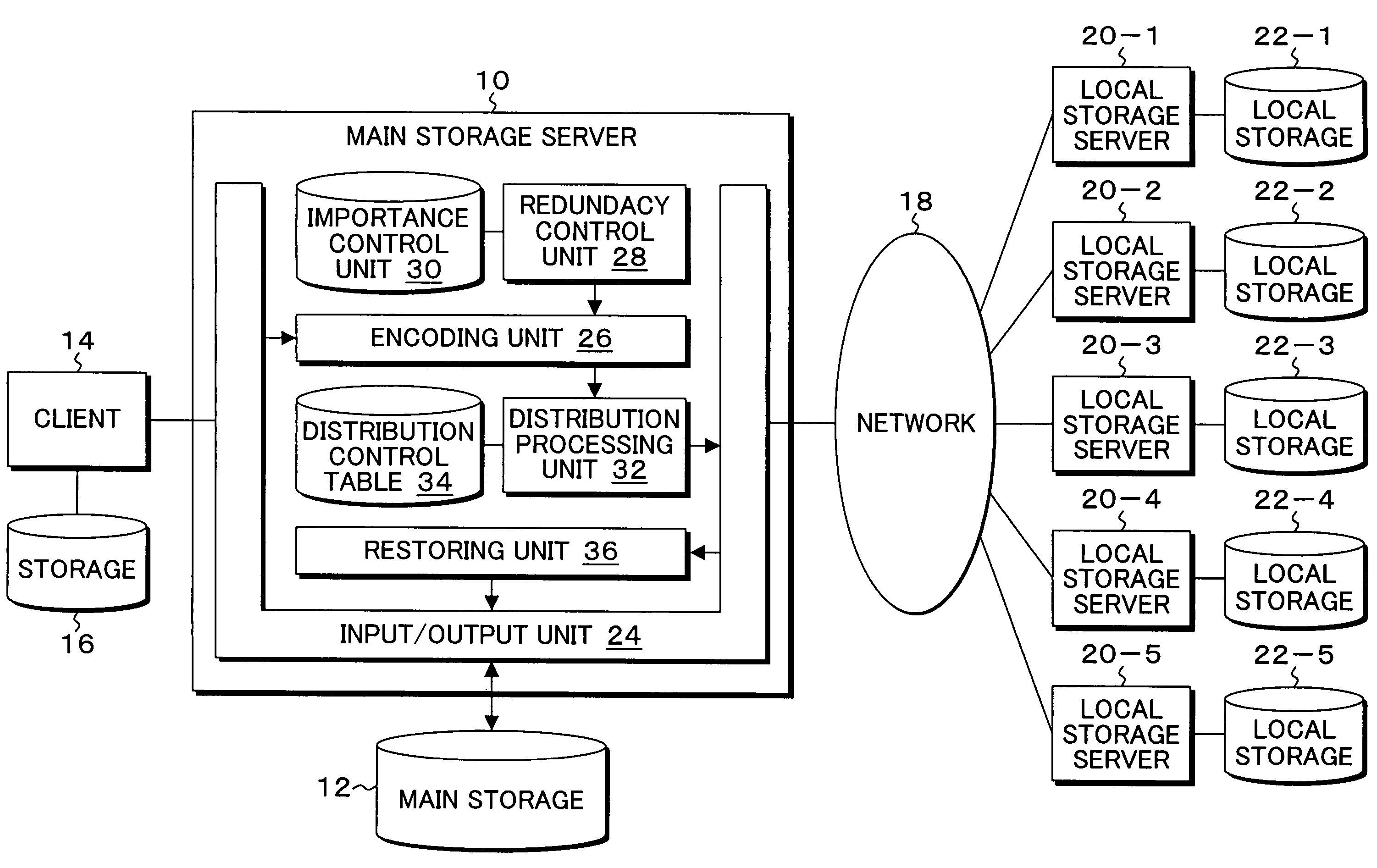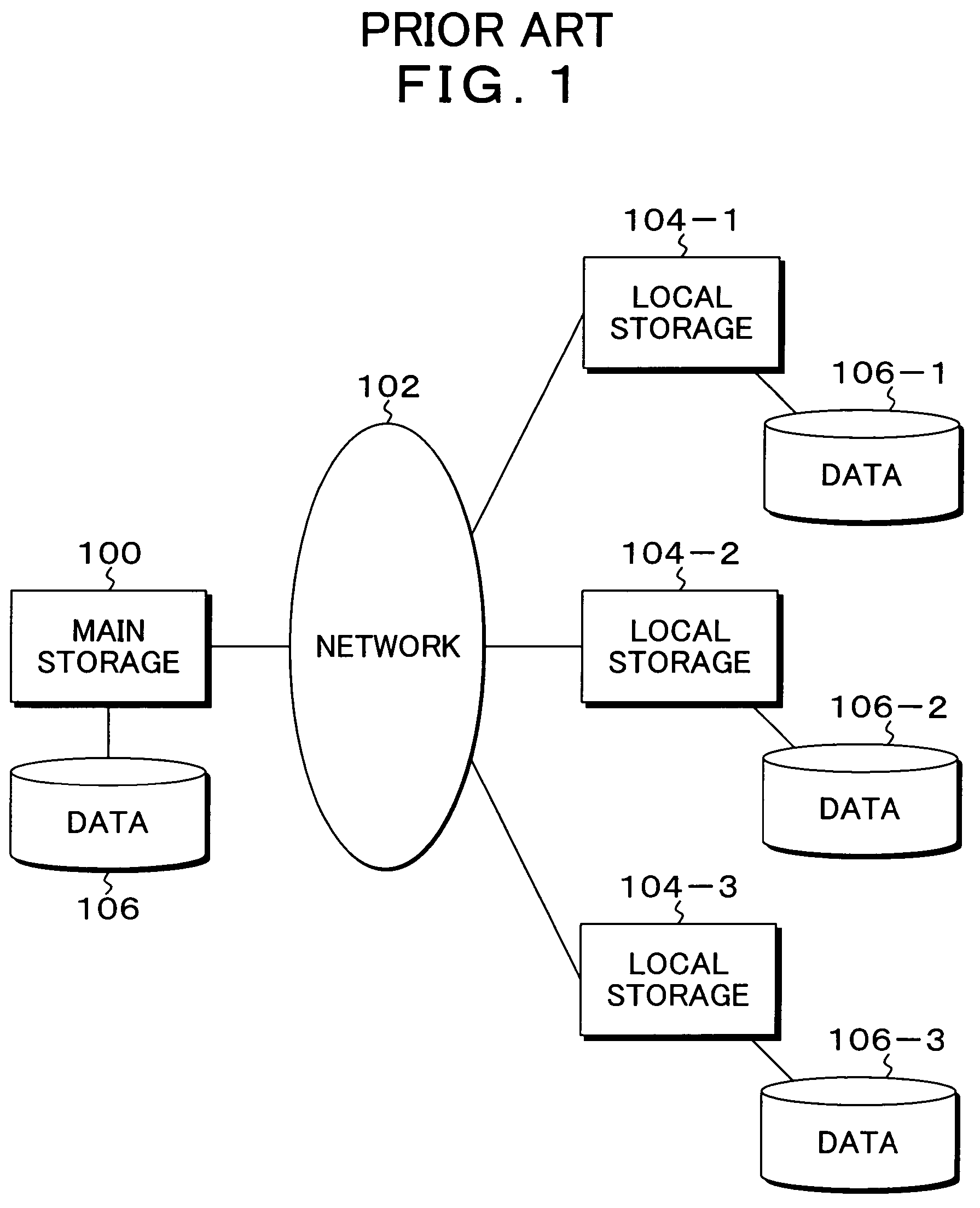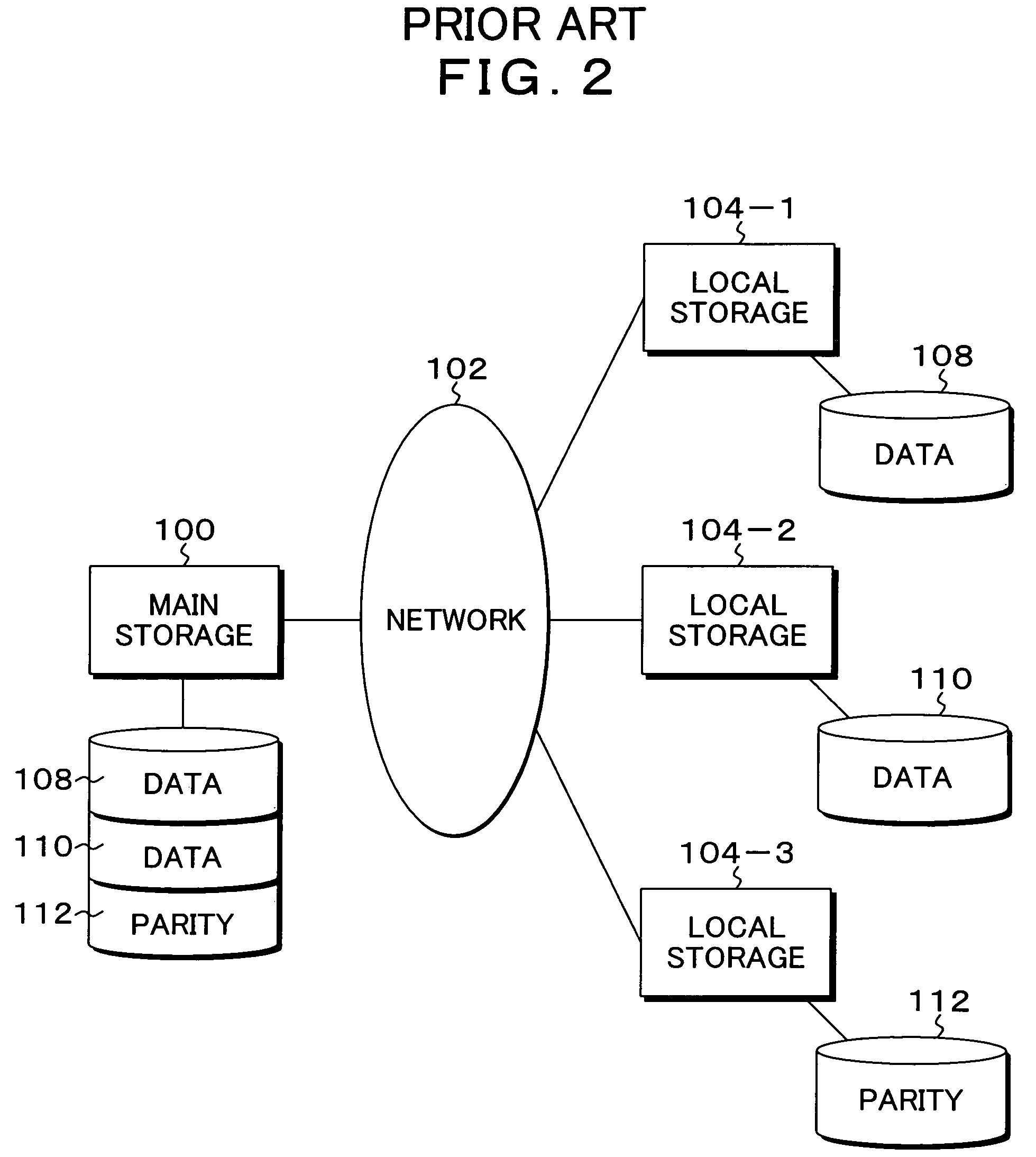Backup system, method, and program
a backup system and program technology, applied in the field of backup systems, methods and programs, can solve the problems of inability to restore, low utilization efficiency, and extremely poor utilization efficiency of storages, and achieve the effects of improving the reliability of backup using distributed storage, improving the redundancy rate of important data, and restoring data
- Summary
- Abstract
- Description
- Claims
- Application Information
AI Technical Summary
Benefits of technology
Problems solved by technology
Method used
Image
Examples
Embodiment Construction
[0057]FIG. 4 is a block diagram of a system function configuration showing an embodiment of a backup system according to the present invention. In FIG. 4, the backup system of the present embodiment is built for backing up data of a client 14, a main storage server 10 is connected to the client 14, and in a main storage 12 of the main storage server 10 stored is data stored in the storage 16 generated by a user at the client 14, for example, a file is synchronously stored in the main storage 12. To the main storage server 10 connected are local storage servers 20-1 to 20-5 via a network 18, the local storage servers 20-1 to 20-5 have local storages 22-1 to 22-5, respectively, and the local storages 22-1 to 22-5 function as distributed storages with respect to the main storage 10. When a file generated and updated at the client 14 is stored in the main storage 12 of the main storage server 10, the file of the user stored in the main storage 12 is employed as original data and convert...
PUM
 Login to View More
Login to View More Abstract
Description
Claims
Application Information
 Login to View More
Login to View More - R&D
- Intellectual Property
- Life Sciences
- Materials
- Tech Scout
- Unparalleled Data Quality
- Higher Quality Content
- 60% Fewer Hallucinations
Browse by: Latest US Patents, China's latest patents, Technical Efficacy Thesaurus, Application Domain, Technology Topic, Popular Technical Reports.
© 2025 PatSnap. All rights reserved.Legal|Privacy policy|Modern Slavery Act Transparency Statement|Sitemap|About US| Contact US: help@patsnap.com



